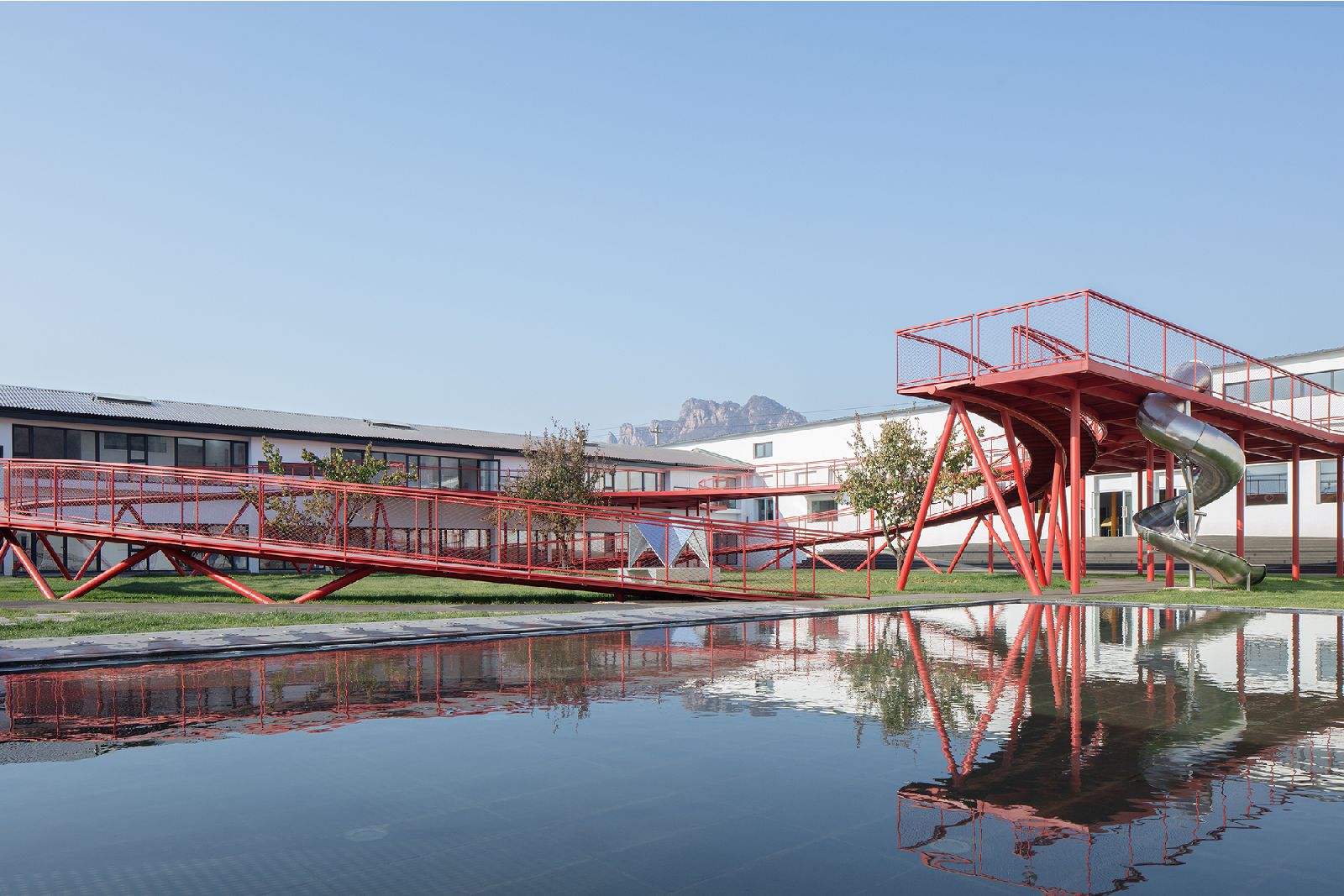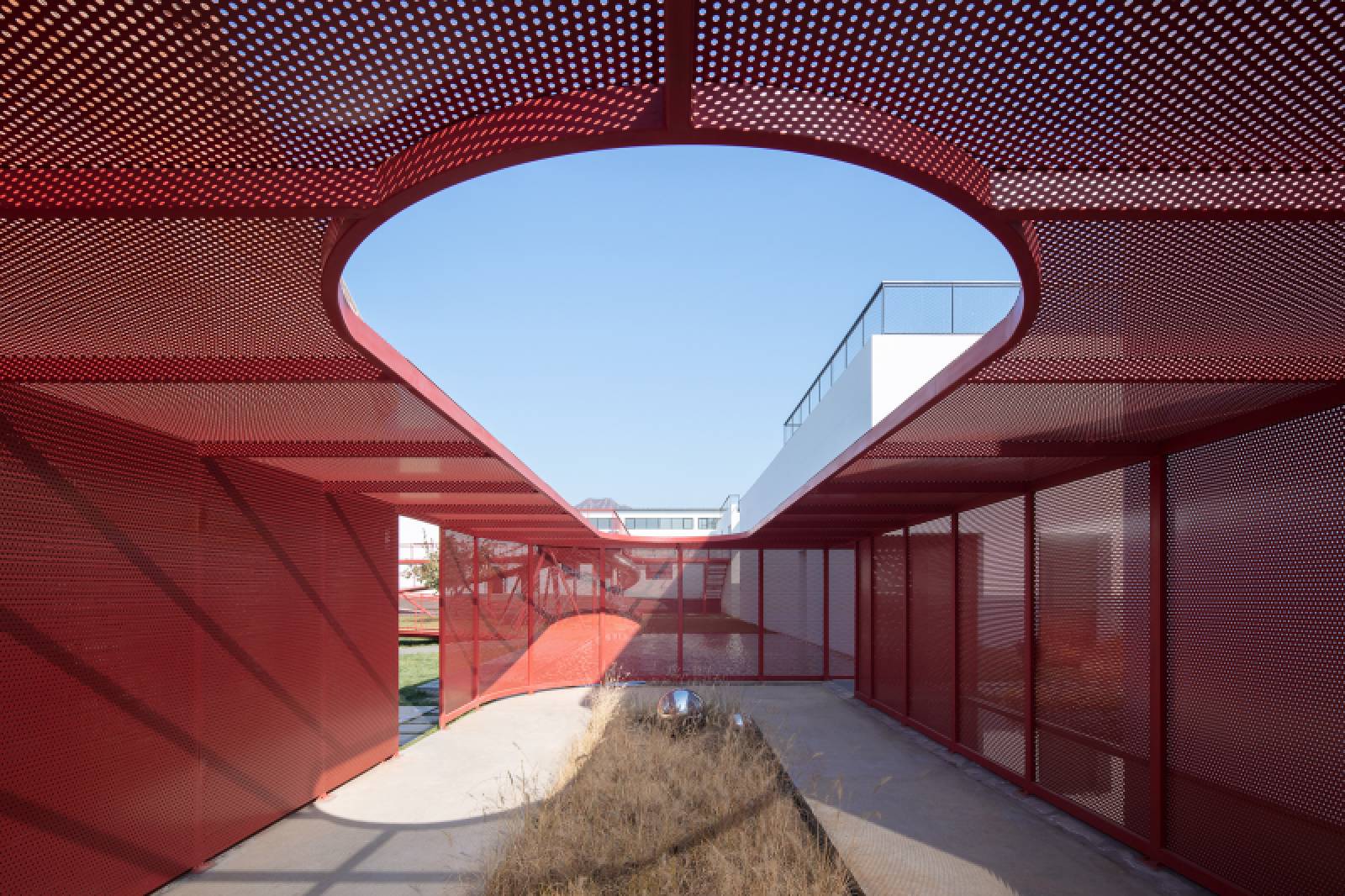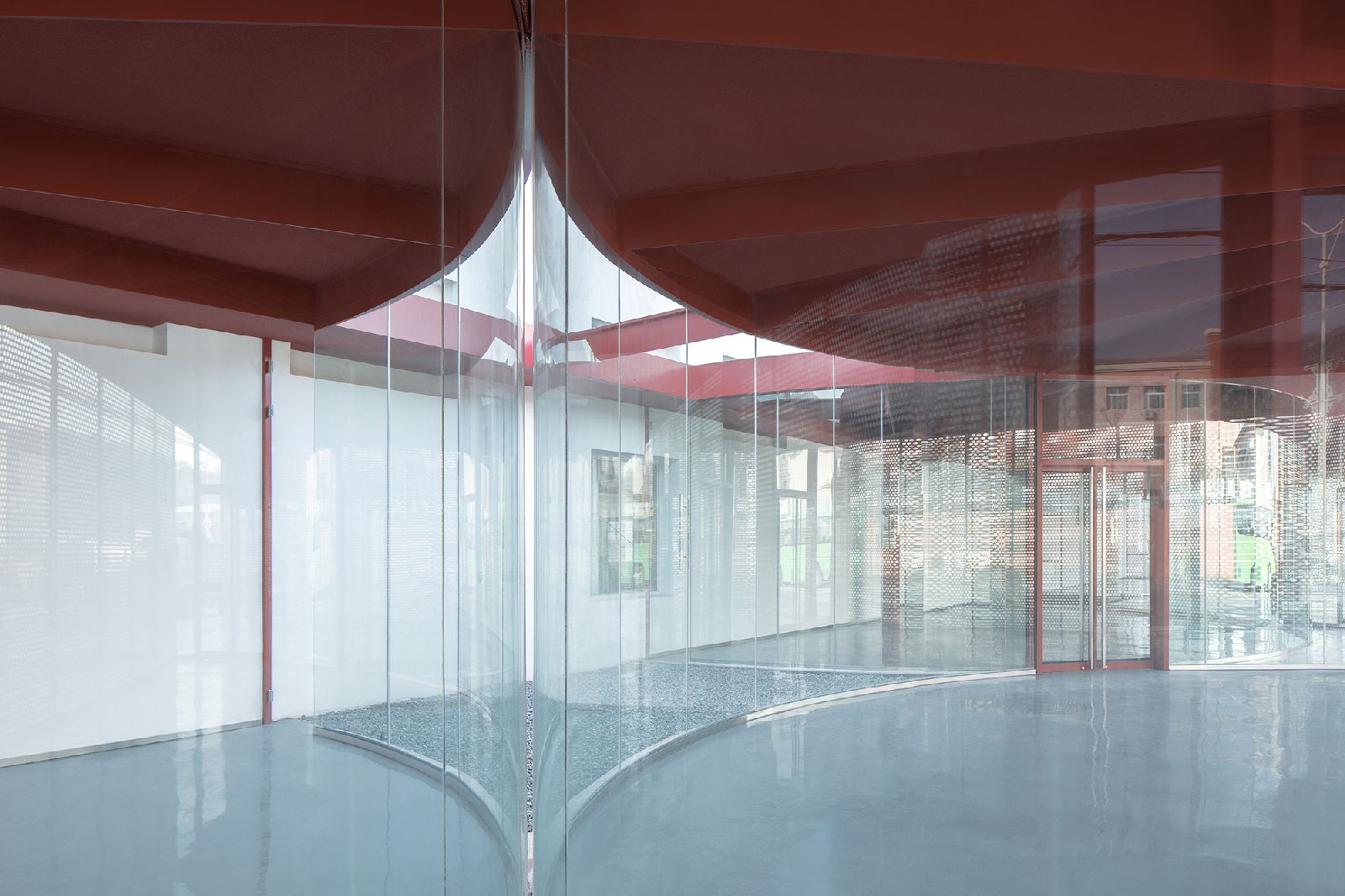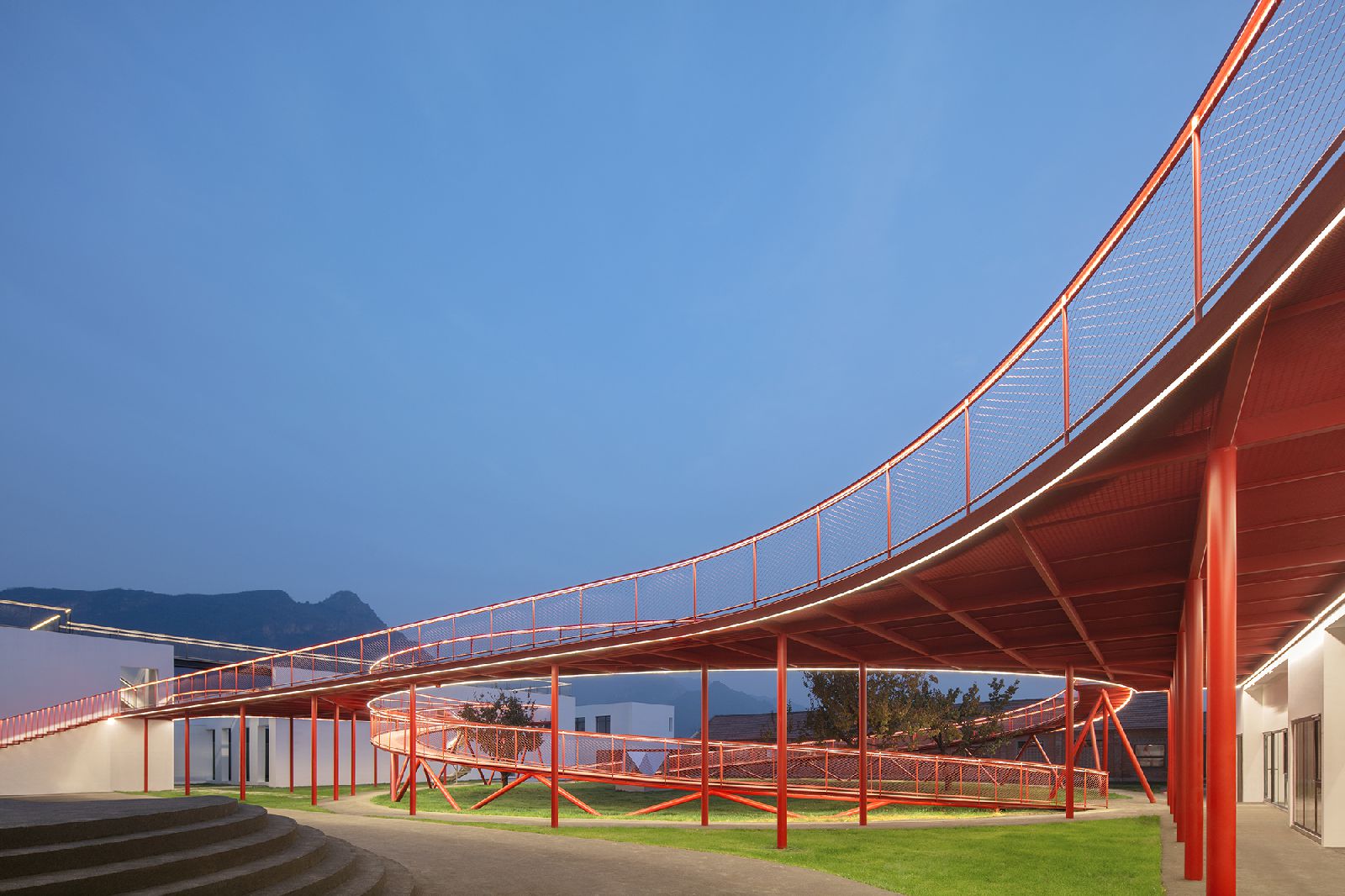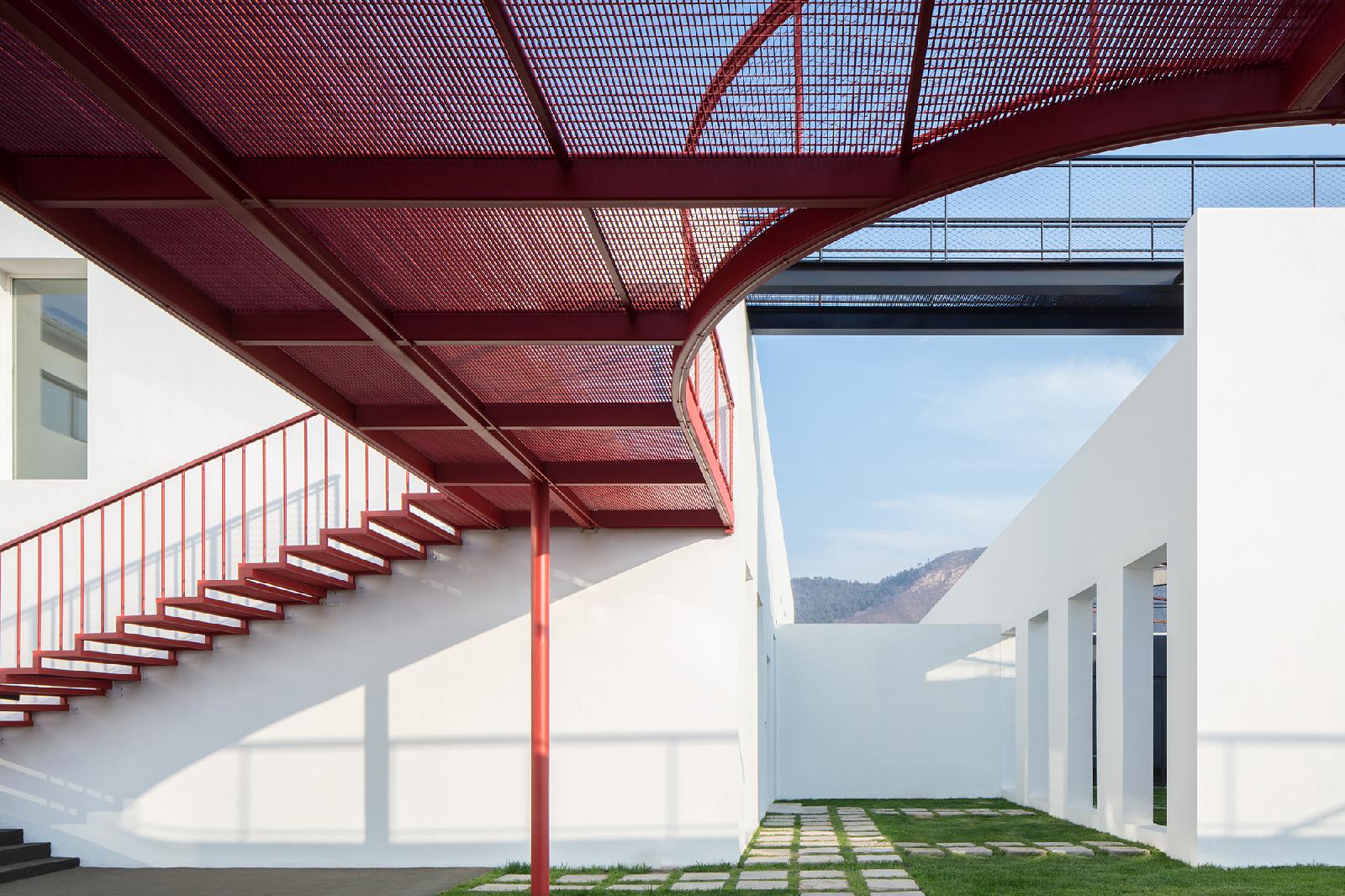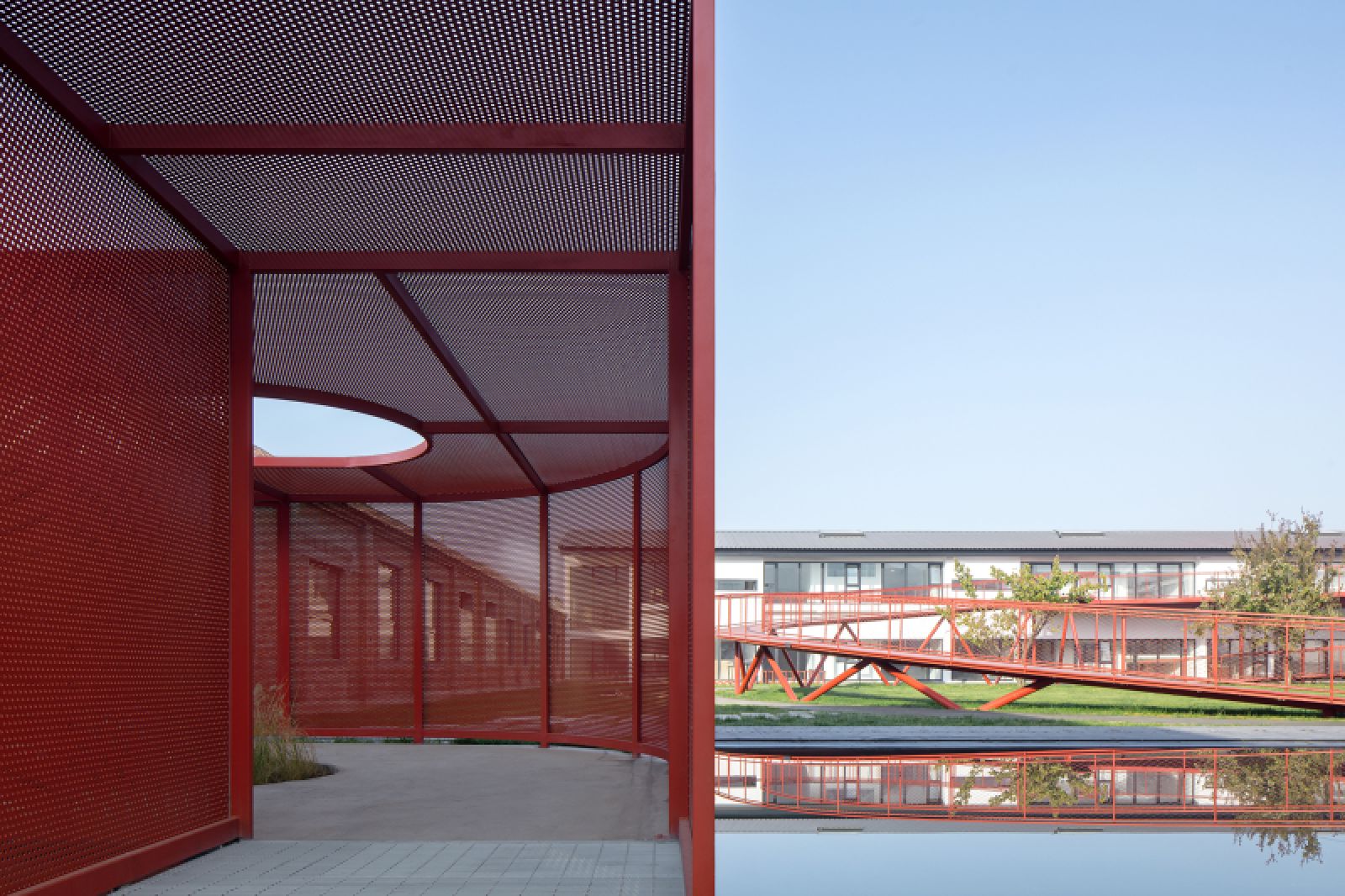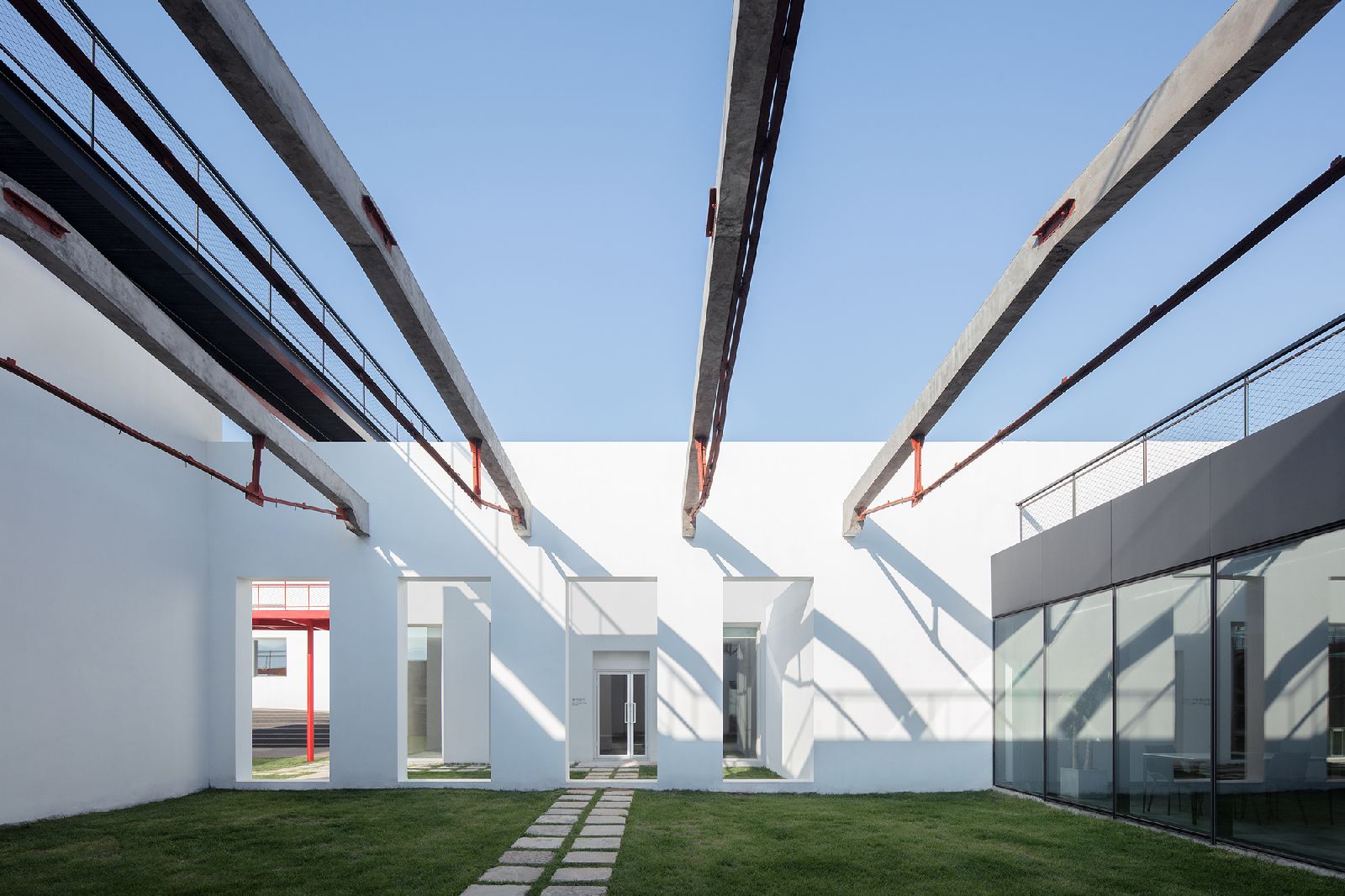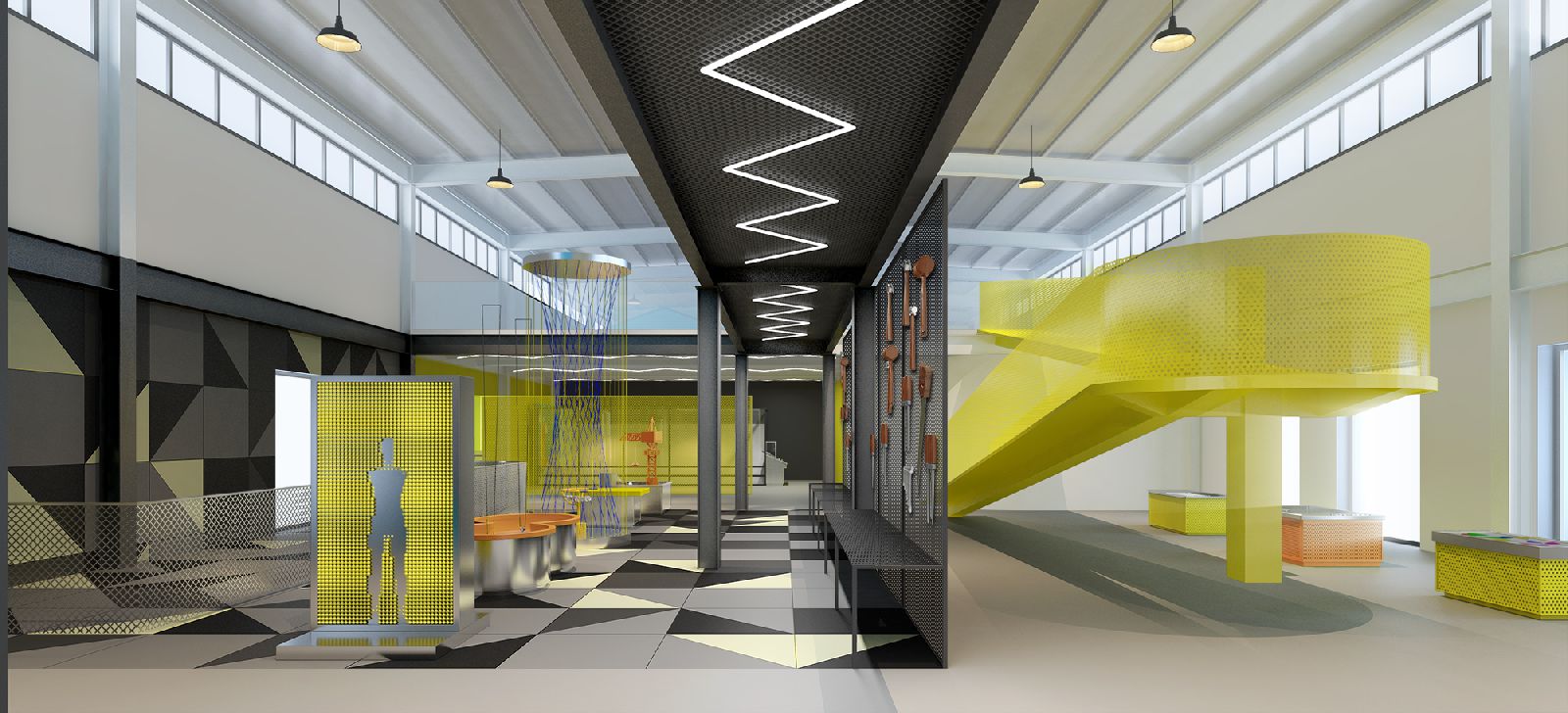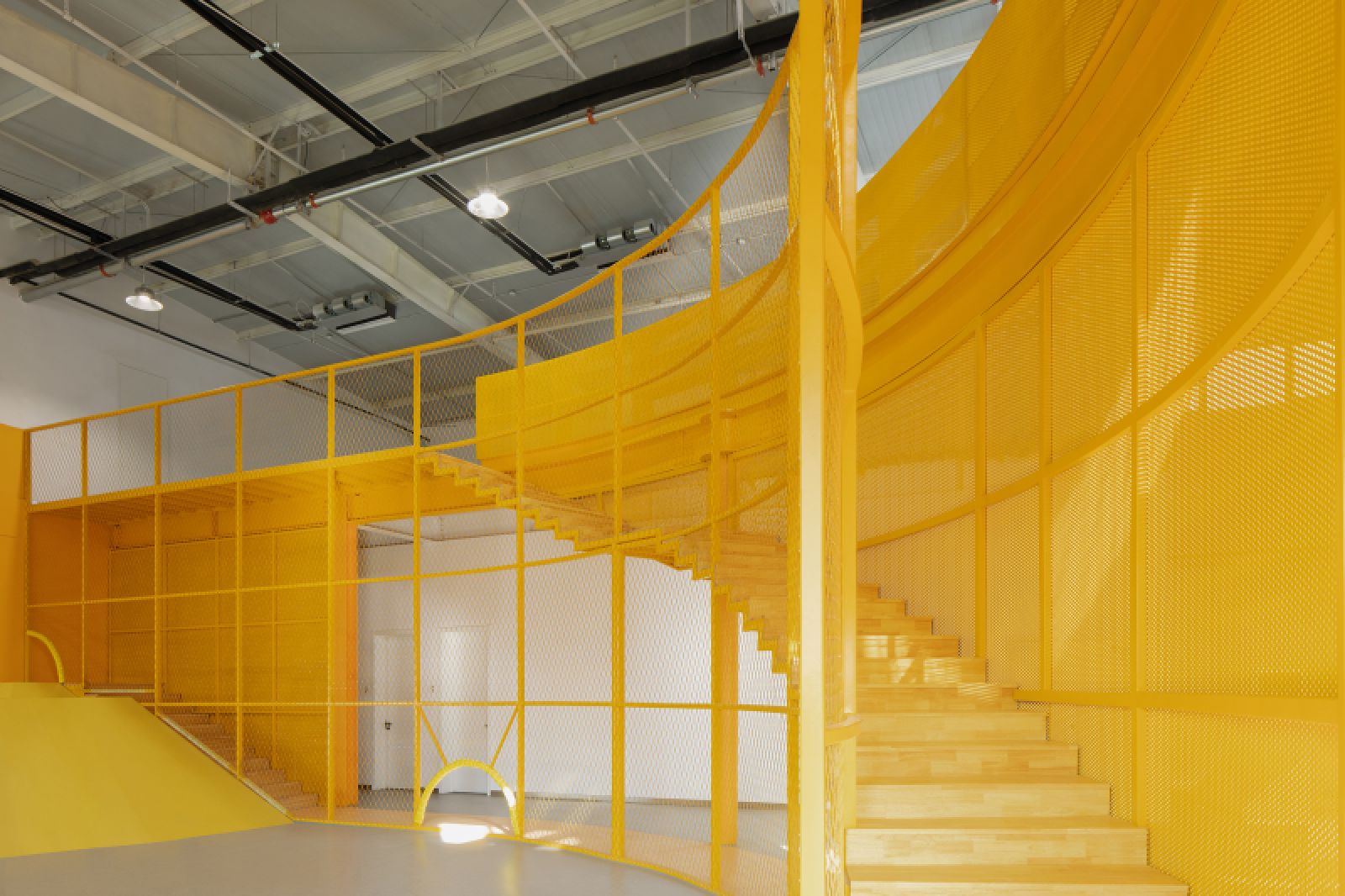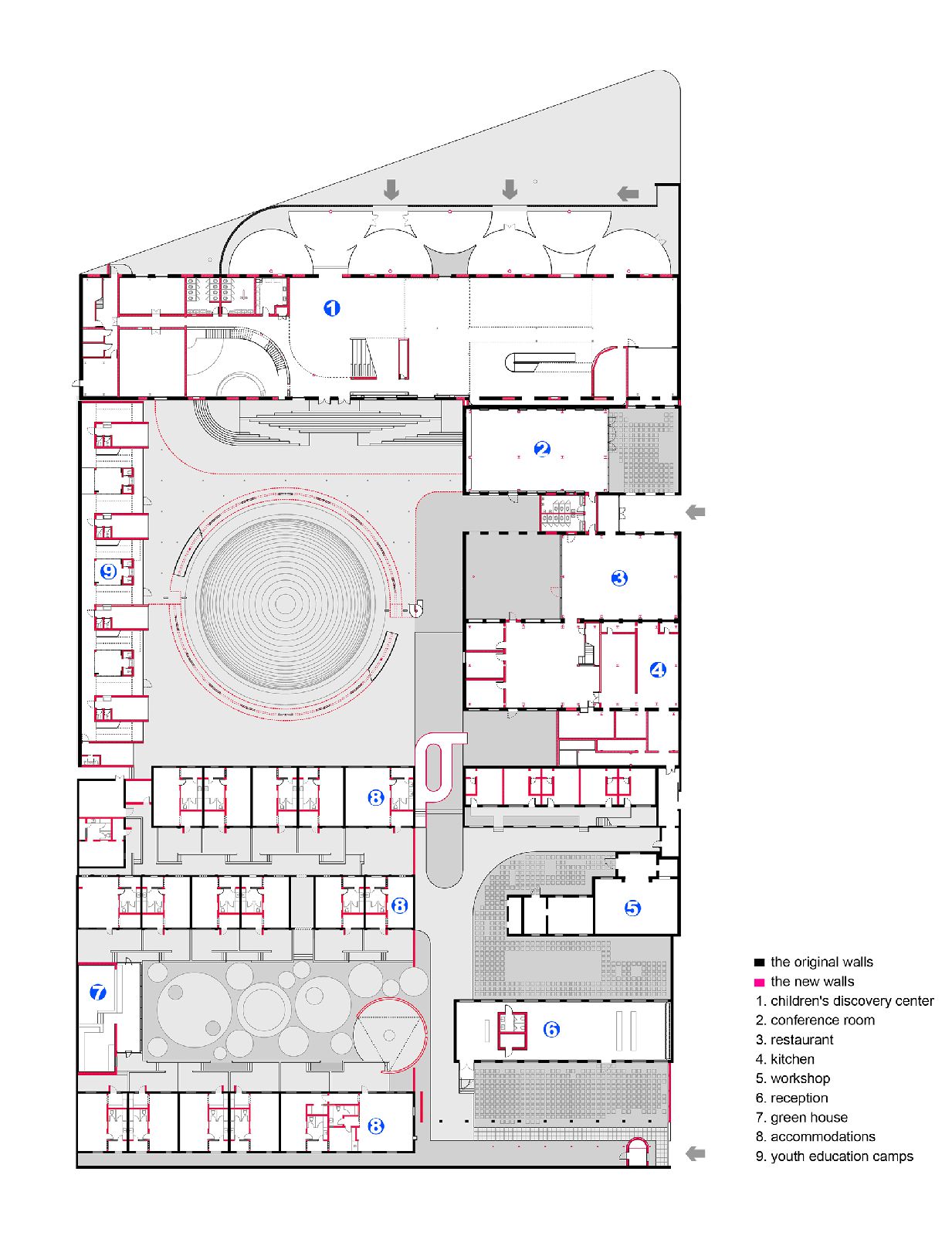The project site was originally a garment manufacturing factory covering an area of 5,000 sqm in Beizhuang Town. We have retained the original layout of factory buildings, and renovated it into a youth activity center which is comprised of youth education camps along with classroom, restaurant, conference room, and accommodations. The site is divided into two courtyards. The northern one is featured by a large one-story single-span factory building with a bent structure. In the southern one there are small red brick buildings with timber trusses and brick bearing walls.
Master Planning
Based on the scales and structural characteristics of the existing buildings, we set children’s discovery center, multifunctional hall, restaurant and other functions that require large-span space in the north zone, while the south area was repurposed into accommodations. In response to various limitations and functional demands, different renovation strategies were adopted for the 12 single buildings.
As opposed to setting a unified style for those buildings, we put emphasis on the relationship between individual buildings, the whole architectural complex and its surroundings. The site is surrounded by factories and mountains. During renovation, we created friendly spatial scales, and inserted a series of structures such as walkway, corridor, small square and transitional yard to link the north zone’ activity space with accommodations in the south area and to produce continuous, three-dimensional landscape experiences.
Children’s Playground
Abstract geometric components were applied to landscape design, to create a surreal setting for children, who are encouraged to explore possibilities of geometric shapes, conceive stories of adventure, play and have fun in various ways. We embedded a circular slope and a steel-grid platform into the courtyard, to build a large entertainment installation. It connects the camp area and the restaurant’s rooftop terrace on west and east sides, while allowing kids to run and play at different heights.
The platform provides shade for the lawn and activities beneath, which helps strengthen a dramatic feeling. Given the site’s atmosphere and textures of building facades, we chose recycled red bricks and concrete bricks as main paving materials, which are complemented by a rubber running track, together producing playful spaces where kids can run and jump freely. In order to liberate children’s perception and imagination, we abandoned conventional forms as conceiving the circular walkway’s structures and the spatial design.
Slanting columns were chosen to support the suspended walkway, forming an undulating pattern that resembles “sine waves” in mathematics. Besides, the double-helix structure of the circle is endowed with a precise proportional relationship. In this way, the space offers alternating experiences, either dynamic or static. Moreover, the fire reservoir outlet at the middle of the lawn was designed into a wedge-shaped optical pavilion, which blends the blue sky into the lawn area. The building facades are embellished with geometric color blocks and lines, with a view to evoking kids’ imagination and stimulating them to interact and explore the distinctive venue.

Photo © Xia Zhi
The existing south courtyard was paved with asphalt, with wild artemisia vigorously growing from cracks on the ground. To avoid adding artificial landscape too “consciously”, we scattered plant clusters that naturally grow at staggering heights to build a garden. We selected perennial plants that are common in Northern China to present changing scenes throughout the year. We wish the garden can help children to discover the authentic beauty of nature, observe varying states of plants, either swaying in the wind, embracing sunshine or withering… The trampoline in the garden is like a “black hole”, attracting both adults and kids.
Between the north and south courtyards, we made use of the existing height difference to create a flowing waterscape, where a capsule-like pavilion was inserted to connect accommodations, restaurant and the north courtyard. It’s like a gentle pause in the spatial rhythm. The pavilion floats on water surface, and its perforated metal screens on two sides reveal moire patterns when viewed from a certain distance. The view becomes blurred, presenting ethereal and dynamic visual effects. The perforated metal panels sometimes filter light and brighten the space, and sometimes refract, distort the light.
The Youth Activity Center in the North District
The northern most original brick and reinforced concrete building on the site had few openings, resulting in poor lighting, which did not meet the requirements for contemporary use. Therefore, we removed the original building in the north and placed a row of entrance lobby, which is a single-sided cantilevered structure in the shape of umbrella ribs. The interior of the lobby is made up of seven inscribing semi-circular glass boxes, which function as the main entrance to the Youth Activity Center, the cafe area and the concept store of creative items, like continuous small settlements.
The 7-meter clear height of the original factory space is divided into active and quiet functions according to floor levels, allowing children to enjoy physical games in a circular circulation on the ground floor. At the end of the mezzanine is set up an area for longer activities of creative and intellectual games and teaching. In order to enable children to interact with the space during their activities, we have taken the landscape staircase as the central stage in the layout of the exhibition items, and arranged the steel ramp and the curved staircase along the longitudinal direction of the factory space. Source by REDe Architects and Moguang Studio.
- Location: Beizhuang Town, Miyun District, Beijing, China
- Architect: REDe Architects, Moguang Studio
- Principal Architects: Jin Lei / REDe Architects; Li Jiaying, Feng Xin / Moguang Studio
- Project Architects: Li Jiaying, Feng Xin
- Landscape Design: Li Jiaying, Xu Wenkai
- Hostel Interior Decoration: Song Wentao, Huang Xinwei
- Client: Liangzijia (Beijing) Culture Development Co., Ltd.
- Site Area: 5400 sqm
- Area: 6300 sqm
- Completion Time: October 2020
- Photographs: Xi Zhi, Zhu Yumeng, Li Jiaying, Courtesy of Moguang Studio



